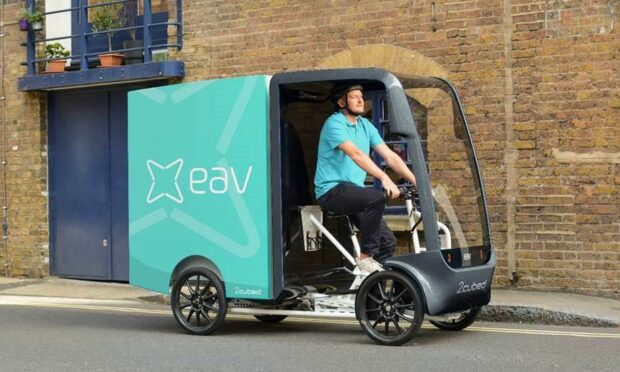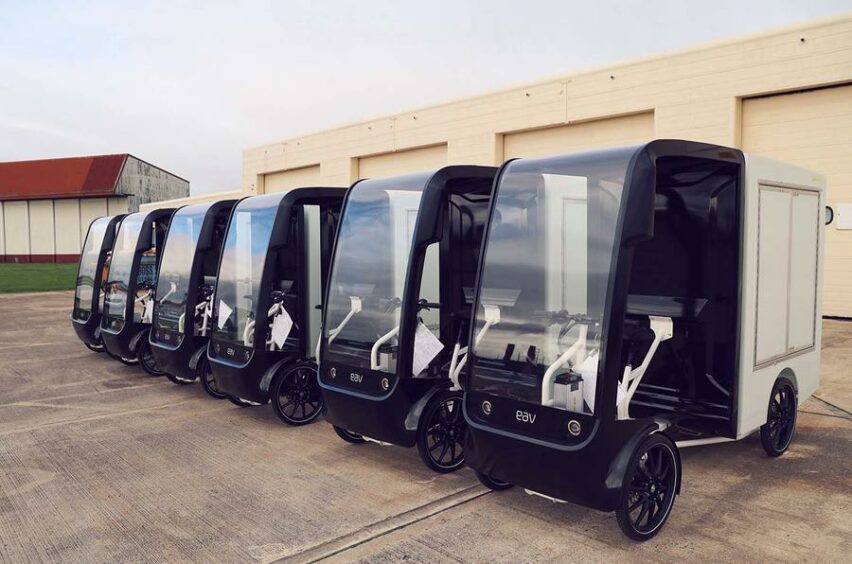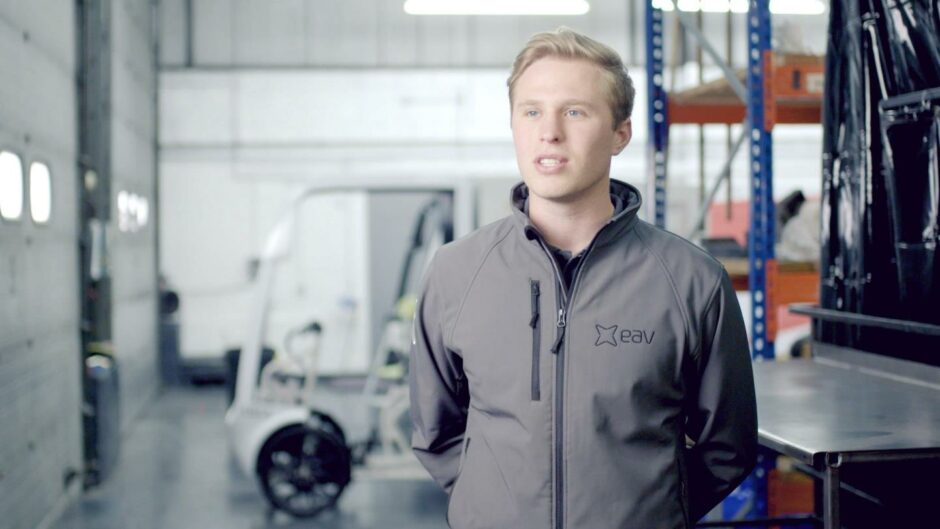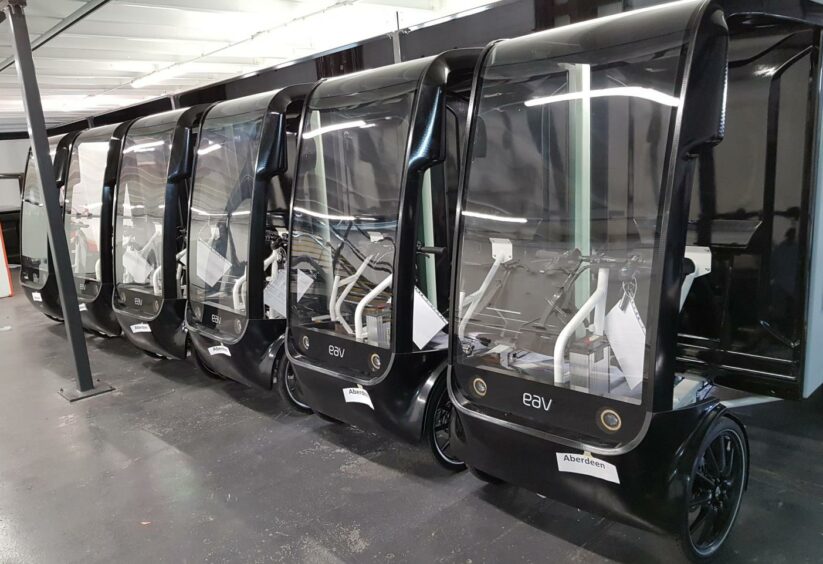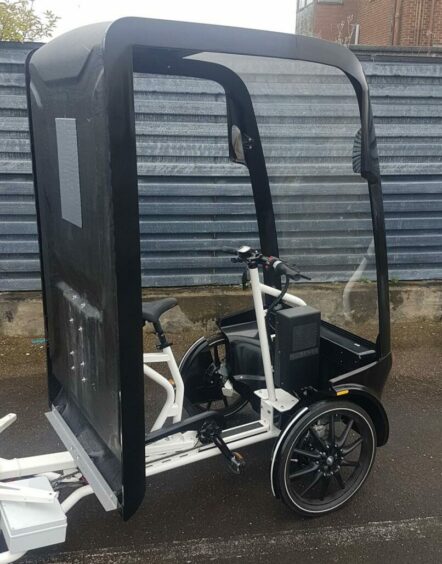Keep your eyes peeled for some brand new technology on the streets of Aberdeen as six hydrogen-powered eCargo bikes are set to transform the way our mail is delivered.
From as early as next month, these new vehicles will be out and about in the Granite City, collecting and dropping off parcels.
Aberdeen is the first city in the UK to trial this technology
What is a hydrogen-powered cargo bike?
The bikes are built by Oxfordshire manufacturer Electric Assisted Vehicles (EAV) and use hydrogen to fuel batteries which give the bikes power.
Essentially they are like larger, more powerful e-bikes, which are bicycles with an integrated electric motor.
Inside the cabin is a saddle and handlebars just like a regular bike. The user still has to pedal but thanks to the hydrogen fuel cell, it’s much quicker and easier to ride – especially uphill.
“The whole idea was to design an ultra-lightweight cargo bike,” said Leo Bethell, head of partnerships at EAV.
“We wanted to make urban deliveries more efficient and eco-friendly.”
The bike has a 250-watt motor and its speed is capped at 15 miles per hour.
It’s also equipped with indicators, a horn and wing mirrors.
“It’s a real hybrid,” Leo said. “And in a city delivery context, it’s much more efficient than a van – you’re not looking for parking either.”
How does it work?
There is a hydrogen tank stored in the bike itself and this hydrogen then powers a small lithium-ion battery which generates the electricity used to turn the wheels.
Once the hydrogen runs out, the EVAH2Cubed eCargo bike is refuelled in a similar way to the hydrogen buses already driving around Aberdeen, at the hydrogen refuelling station at Kittybrewster.
Interestingly, it’s not yet known how far the bikes will be able to travel in real-time.
“We’re still unsure exactly how far they’ll go because we haven’t done this yet,” said Leo, “Aberdeen is the trial.
“We are hoping it will be a few hundred miles so it could just be once a week that the vehicle goes to be refuelled.”
Currently, similar eCargo bikes produced by EAV which are fully electric have a range of about 40 miles.
These are in use already in place in other locations across the UK, as well as Europe and in New York.
Each of these bikes also carries a spare battery ready to slot in. This avoids having to wait for it to charge.
Who will use the bikes in Aberdeen?
Aberdeen is the first place in the UK to trial this technology, though it is eventually expected to be rolled out to seven other European cities for further trials.
The bikes are arriving in the Granite City in February and will be rolled out as soon as possible.
Though the bikes are just a few weeks from arriving, it’s not yet known who will be using them.
Aberdeen City Council has been taking applications from public, private and third sector organisations to decide who will get use of the bikes for the duration of the 12-month pilot.
“You’re never going to replace a big lorry or a massive tractor or whatever with these, but you could replace a small van,” Leo said.
“Primarily we see the end users as parcel couriers and supermarkets.
“After all, EAV designed these vehicles as a response to customers of big supermarkets and brands asking for deliveries to be made in eco-conscious vehicles.”
Will they drive on the road?
The eCargo bikes will use roads and cycle lanes to get around the city.
Like other electric vehicles, they are virtually silent and produce no noise pollution.
“I also think they are quite friendly-looking,” said Leo. “People always smile and ask questions about what they are.”
Weighing in at just 170kg, the eCargo bikes are incredibly lightweight compared to traditional small vans.
EAV is “obsessed” with weight because that’s where energy much of the energy used and wasted, explains Leo.
Lightweight also means less damage to city roads and pavements meaning savings for city councils and an altogether safer and more pleasant place to live, he said.
Councillor Phillip Bell, Aberdeen City Council’s hydrogen champion, said that the city was at the “exciting” stage of taking delivery of six hydrogen cargo bikes in the spring.
“The pilot will test low emission carbon bikes for last-minute delivery of small parcels using hydrogen fuel technology,” he said.
“This is another important element of the Council’s H2 Programme and its leadership in the deployment of emerging low emission technologies and creating new green economy in the city.”
